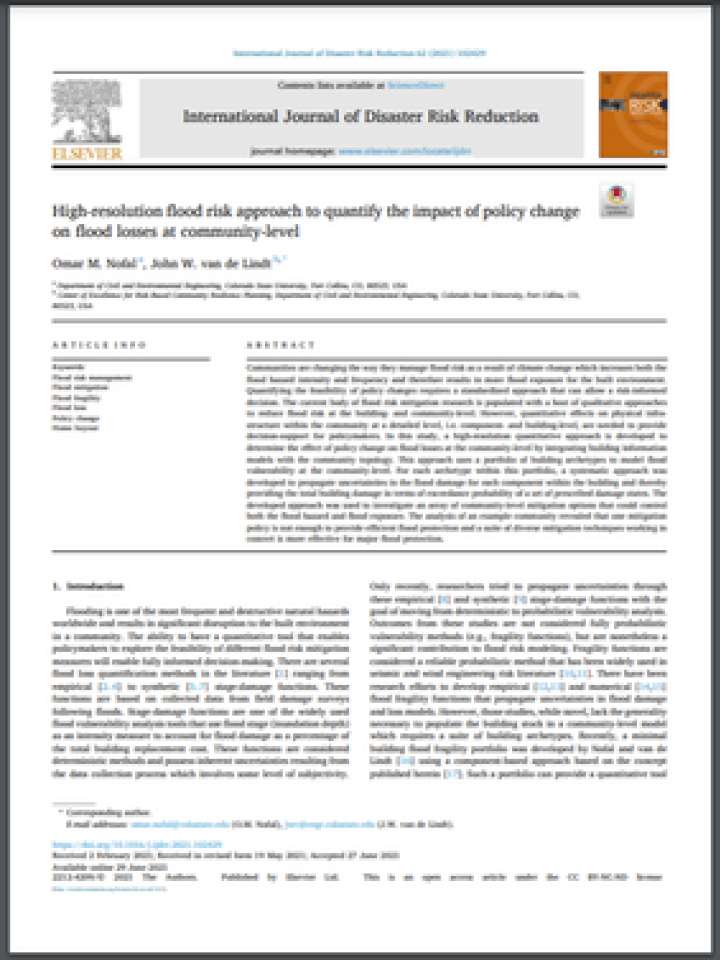High-resolution flood risk approach to quantify the impact of policy change on flood losses at community-level
In this study, a high-resolution quantitative approach is developed to determine the effect of policy change on flood losses at the community-level by integrating building information models with the community topology. Communities are changing the way they manage flood risk as a result of climate change which increases both the flood hazard intensity and frequency and therefore results in more flood exposure for the built environment. Quantifying the feasibility of policy changes requires a standardized approach that can allow a risk-informed decision. The current body of flood risk mitigation research is populated with a host of qualitative approaches to reduce flood risk at the building- and community-level. However, quantitative effects on physical infrastructure within the community at a detailed level, i.e. component- and building-level, are needed to provide decision-support for policymakers.
This approach uses a portfolio of building archetypes to model flood vulnerability at the community-level. For each archetype within this portfolio, a systematic approach was developed to propagate uncertainties in the flood damage for each component within the building and thereby providing the total building damage in terms of exceedance probability of a set of prescribed damage states. The developed approach was used to investigate an array of community-level mitigation options that could control both the flood hazard and flood exposure. The analysis of an example community revealed that one mitigation policy is not enough to provide efficient flood protection and a suite of diverse mitigation techniques working in concert is more effective for major flood protection.
Explore further
